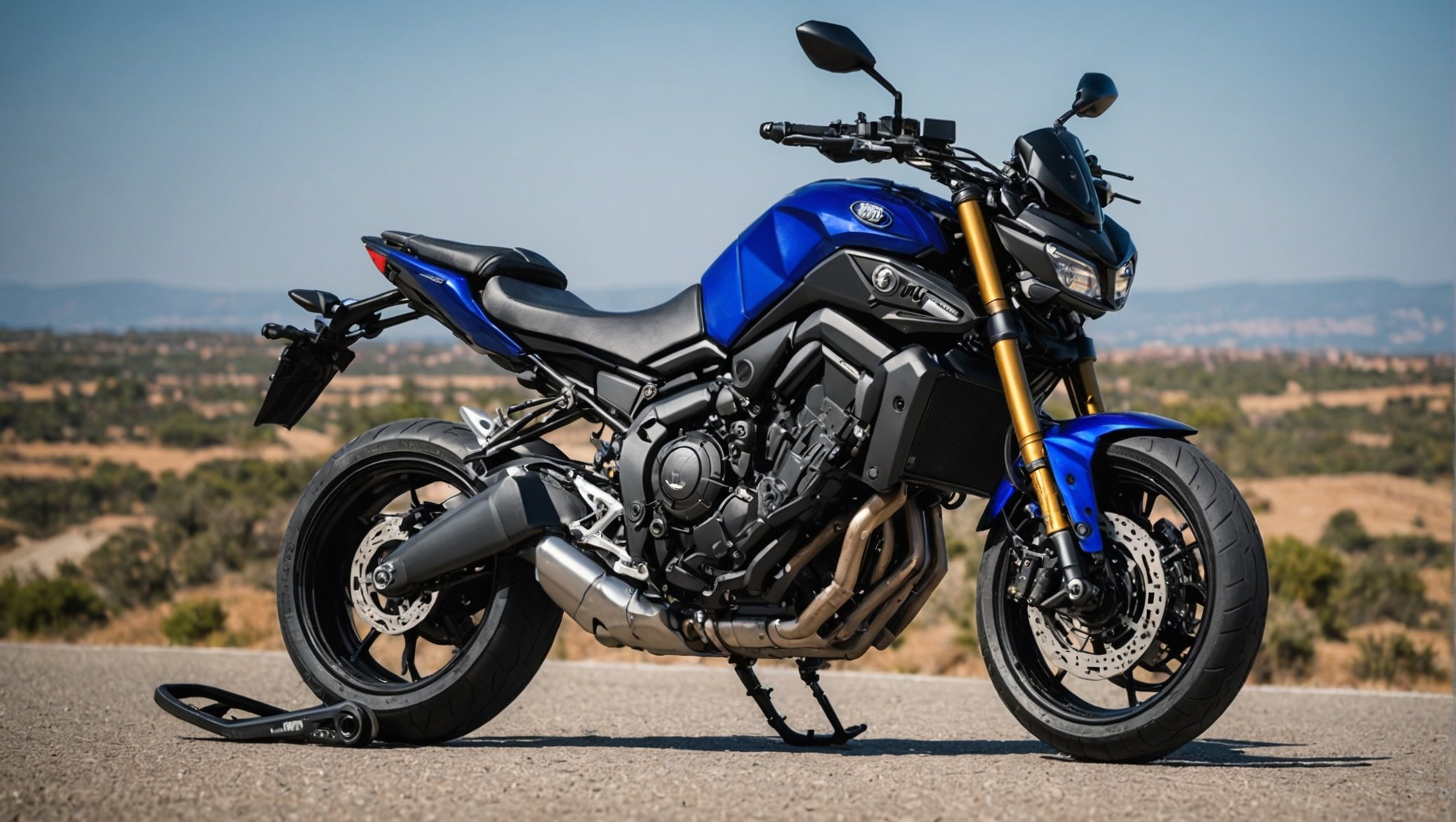Adjusting rear suspension preload on your Yamaha MT-09 is key to optimizing your riding experience. A tailored setup can significantly enhance comfort and handling, especially when rider weight varies. This guide delivers practical advice, ensuring you can fine-tune your bike's rear suspension according to your specific needs. Whether you’re a lightweight rider or heavier, mastering preload adjustments will transform your ride, offering improved stability and responsiveness. Let's explore how to achieve the perfect balance for your MT-09.
Understanding Rear Suspension Preload
Rear suspension preload is a crucial aspect of motorcycle dynamics, especially for models like the Yamaha MT-09. It refers to the initial compression applied to the rear suspension spring. This setting is essential because it affects how much the suspension compresses under the weight of the bike and rider.
Topic to read : Effective Strategies to Stop and Heal Surface Rust on Your Suzuki DRZ400 Frame
Adjusting the preload is significant for several reasons. Firstly, it influences the ride quality. A correctly set preload ensures that the suspension can absorb bumps effectively, providing a smoother ride. Secondly, it affects bike handling. Proper preload settings can enhance stability, especially during cornering or when riding at high speeds.
For different rider weights, adjusting the preload is imperative. A heavier rider may require more preload to prevent the suspension from bottoming out, while a lighter rider might need less to avoid a harsh ride. This adjustment ensures that the Yamaha MT-09 suspension performs optimally across various conditions, maintaining balance and control. Understanding and adjusting rear suspension preload is key to achieving a comfortable and controlled riding experience.
Additional reading : Essential Tips for Safeguarding Your Honda Rebel 500”s Fuel System from Winter Storage Clogs
How to Adjust Rear Suspension Preload
Proper suspension tuning is key to enhancing your motorcycle's performance. Adjusting the rear suspension preload on the Yamaha MT-09 is straightforward with the right approach.
Tools Required for Adjustment
Before diving into the adjustment process, ensure you have the necessary tools. A spanner wrench is essential for adjusting the preload collar. Additionally, a measuring tape helps verify the sag, ensuring precision in your adjustments. Having a service manual on hand can also provide specific torque settings and guidance tailored to the Yamaha MT-09.
Step-by-Step Guide for Adjustment
-
Measure the Sag: With the bike on a stand, measure the distance from the axle to a fixed point on the frame. Repeat this with the rider seated. The difference is the sag, which should be within the recommended range.
-
Adjust the Preload: Use the spanner wrench to turn the preload collar. Clockwise increases preload, counterclockwise decreases it. Adjust until the sag falls within the optimal range.
-
Test Ride: After adjusting, take the bike for a test ride. Ensure the suspension feels balanced and responsive. Fine-tune as necessary for the best ride quality.
By following these steps, you can achieve a well-tuned suspension that enhances both comfort and performance.
Recommended Preload Settings for Various Rider Weights
Understanding the appropriate preload settings for different rider weight settings is crucial for optimizing your motorcycle's performance. The suspension settings should be adjusted to accommodate a range of rider weights, ensuring a balanced and comfortable ride.
Suggested Preload Settings Based on Rider Weight Categories
- Light Riders (under 150 lbs): Minimal preload is recommended. This prevents the suspension from becoming too stiff, allowing for a smoother ride.
- Average Riders (150-200 lbs): A moderate preload setting is ideal. This balance ensures the suspension remains responsive without bottoming out.
- Heavy Riders (over 200 lbs): Increased preload is necessary. This helps maintain suspension integrity and prevents excessive compression under load.
Impact of Different Weights on Suspension Performance
Rider weight significantly affects how the suspension reacts to road conditions. Heavier riders require more preload to maintain optimal suspension travel, while lighter riders benefit from less preload to avoid a harsh ride.
Customization Tips for Specific Riding Styles
Customizing suspension settings based on your riding style can further enhance performance. For aggressive riding, slightly increase preload for better handling. For leisurely cruising, decrease preload for enhanced comfort. Adjusting these settings allows you to tailor the bike's response to your preferences.
Visual Aids for Suspension Adjustment
When it comes to suspension adjustment, visual aids can be incredibly helpful for understanding the process and achieving optimal results. Suspension Adjustment Diagrams are invaluable tools, providing clear illustrations of the preload adjustment process. These diagrams often showcase the exact steps needed to alter the preload settings effectively, ensuring you can follow along with precision.
Images depicting optimal preload settings for various rider weights can also guide your adjustments. By comparing your current setup to these visuals, you can better understand what changes need to be made for a smoother ride. These images often highlight key components, making it easier to identify adjustment points on your motorcycle.
For those who prefer a dynamic learning experience, video resources offer an engaging way to grasp suspension adjustment techniques. These videos typically feature step-by-step guides, allowing you to watch and learn as experts demonstrate the process. They can be especially beneficial for visual learners, providing a comprehensive overview of how to achieve the perfect suspension setup.
Incorporating these visual aids into your adjustment routine can enhance your understanding and ensure your motorcycle's suspension is finely tuned for your needs.
Effects of Preload Adjustment on Ride Quality
Adjusting the preload on your motorcycle's rear suspension can significantly impact ride quality. This adjustment is crucial for ensuring comfort across various riding conditions. When preload is set correctly, the suspension absorbs road irregularities more effectively, providing a smoother and more comfortable ride. Conversely, incorrect preload settings can lead to a harsh or bouncy ride, reducing overall comfort.
The relationship between preload and cornering stability is another critical aspect. Proper preload ensures that the suspension maintains optimal contact with the road, enhancing stability during cornering. This stability is particularly important when navigating sharp turns or riding at high speeds, where maintaining control is paramount.
Feedback from riders who have adjusted their preload settings often highlights noticeable improvements in suspension performance. Many report a more responsive ride, with the bike feeling more planted and predictable. These adjustments can transform the riding experience, making it more enjoyable and less fatiguing over long distances.
In summary, understanding and adjusting preload is essential for achieving the best ride quality and suspension performance, ultimately enhancing both comfort and handling.
Common Questions About Rear Suspension Preload
Understanding rear suspension preload can sometimes be confusing, leading to several Frequently Asked Questions. Let's address some common suspension queries to clarify this crucial aspect of motorcycle dynamics.
Addressing Myths and Misconceptions
One prevalent myth is that more preload always equals better performance. This isn't true. Excessive preload can lead to a harsh ride and reduced traction. Proper preload settings depend on rider weight and riding style, not a one-size-fits-all approach.
Troubleshooting Common Issues
If you're experiencing a bouncy ride, it might be due to incorrect preload settings. Check if the preload is too low, causing the suspension to bottom out. On the other hand, if the ride feels too stiff, the preload might be too high. Adjusting the preload to suit your weight and riding conditions can resolve these issues.
Recommendations for Ongoing Maintenance
Regularly inspect your suspension for wear and tear. Ensure the preload adjustment collar is clean and turns smoothly. Periodically check the sag and adjust as necessary. Consistent maintenance not only optimizes performance but also extends the lifespan of your motorcycle's suspension system.
Safety Tips for Suspension Tuning
Ensuring suspension safety is paramount when tuning your motorcycle. Regular checks and adjustments are vital for maintaining both performance and safety. Neglecting these can lead to compromised handling and increased accident risk.
Importance of Regular Checks and Adjustments
Regularly inspecting your suspension system helps identify wear or damage early. This proactive approach ensures that any necessary tuning precautions are taken, preserving the bike's stability and safety. It's essential to verify that the preload settings remain consistent with your riding needs, especially after significant weight changes or long rides.
Guidelines for Safe Riding After Preload Adjustments
After adjusting preload, take precautions to ensure safe riding. Begin with a cautious test ride to assess the bike's new handling characteristics. Pay attention to any unusual noises or vibrations, as these may indicate improper tuning. Adjust as needed to maintain a balanced and comfortable ride.
When to Consult a Professional
While many adjustments can be done at home, certain situations warrant professional consultation. If you're unsure about the tuning process or encounter persistent issues, seeking expert advice ensures your suspension is correctly adjusted, enhancing both safety and performance.
















